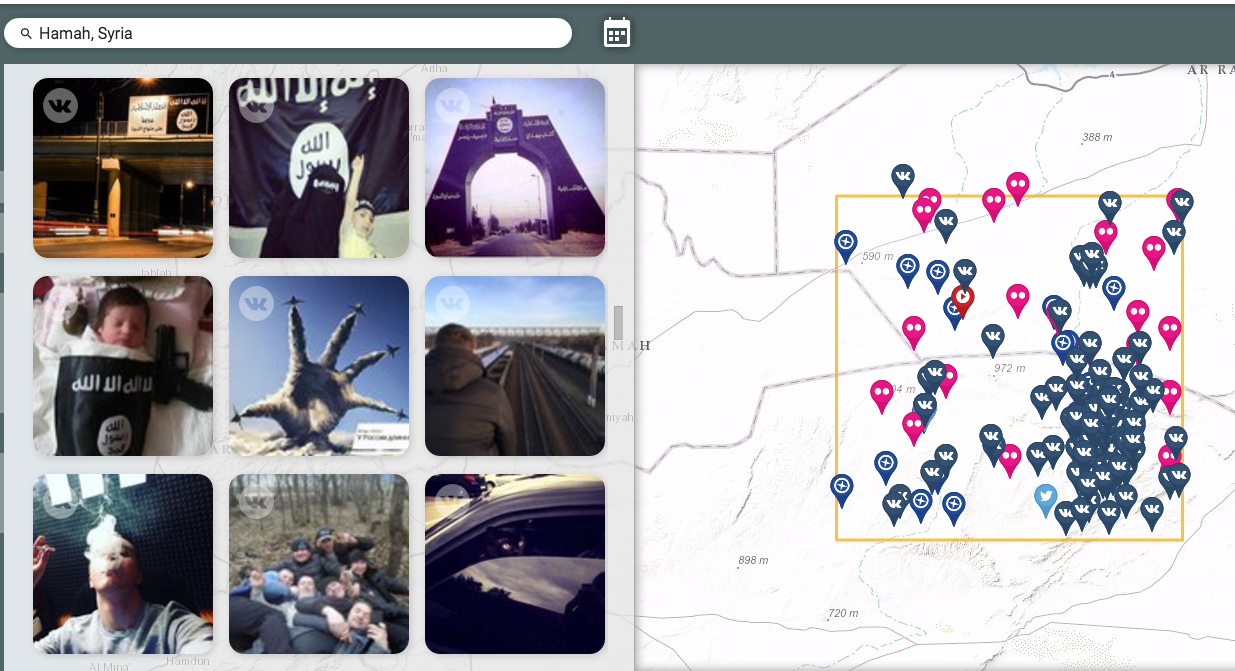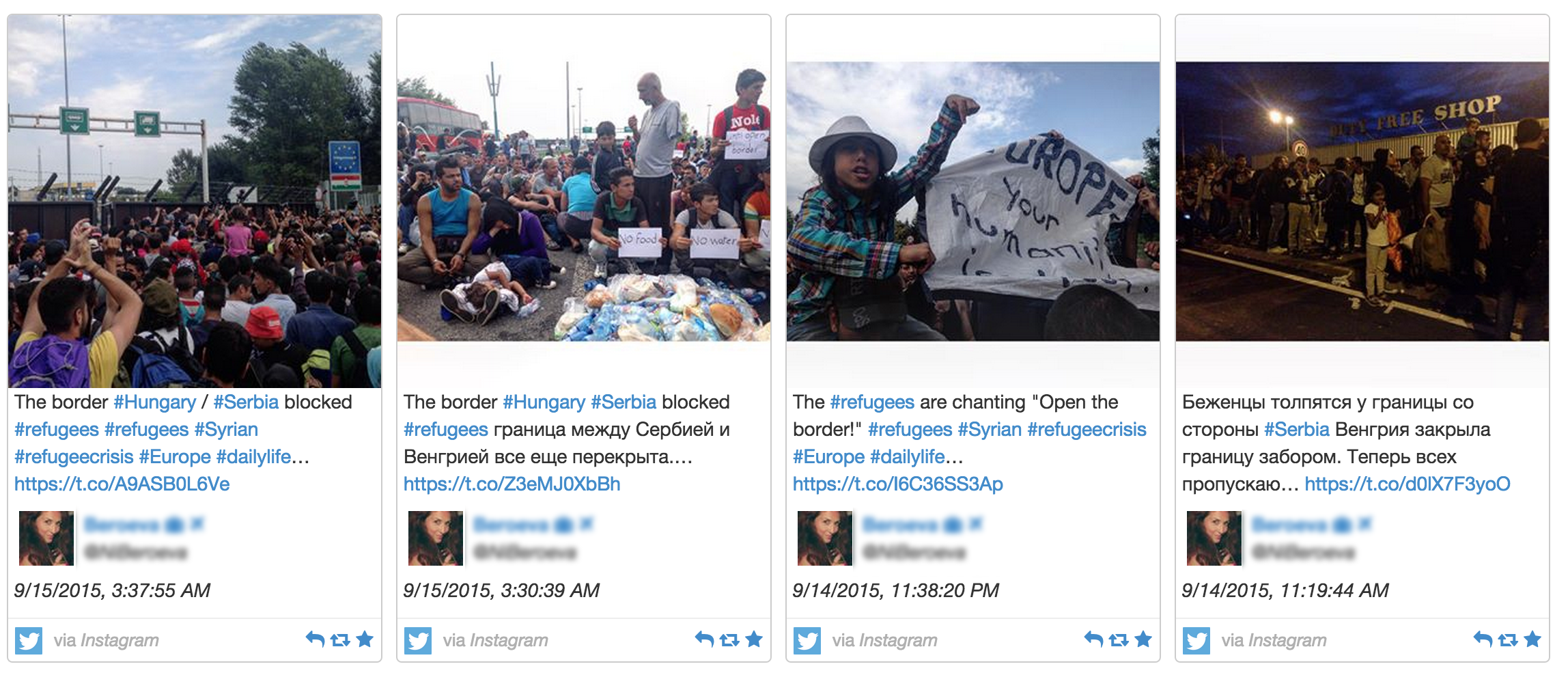We don’t have an intelligence problem, we don’t have a signit problem, not even a humint problem, we have a lack of will which translates to a lack of strategy and a mission objective. We did get Usama bin Ladin but what was the real gain?
At least for we weary Americans, we can take some confidence that we do have technology.
The Drone that Stalked Bin Laden
AirandSpace: In 2009, after two weeks of being embedded as an independent journalist with a small team of U.S. Marines in Afghanistan, I ended up at Combat Outpost Monti, a 14-acre camp of tents, plywood huts, a few concrete bunkers and makeshift guard towers, and a helicopter landing area, all ringed by collapsible barriers. At the outpost, one of hundreds built in Afghanistan during the 13 years of NATO combat operations, the Marines were training and fighting alongside Afghan National Army soldiers. COP Monti was less than 10 miles from the Pakistan border, near the Federally Administered Tribal Areas.

My time with the team was just about up when they were ordered to move up the Kunar River valley on a large combat operation. I stayed behind with the Afghan soldiers and, before I managed to find a ride out, weathered a mortar and rocket attack from combatants who had undoubtedly planned the attack and stockpiled the weapons for it at a site across the border, in Pakistan. Even if the Marines had still been there, they could not have pursued the attackers. Al-Qaeda, Taliban, and other belligerents have hidden from the U.S. military in Pakistan’s tribal areas, with varying success, since Americans entered Afghanistan in 2001.
“Everybody knows that the Taliban and other groups train, raise money, plan operations, and even recruit in the tribal areas of Pakistan,” says a retired U.S. infantry officer who served two tours in Afghanistan as well as a rotation in Iraq. (All of the sources quoted in this article spoke to me on the condition that I would not name them because they do not have permission to speak on the record.) “The insurgent leadership move men and materials into Afghanistan and attack American and coalition forces and assets.” Then, he says, they scurry back to Pakistan, where U.S. forces can’t follow.
At least, not on the ground.
Since 2004, the United States has followed insurgents into Pakistan, and has spied on and sometimes killed them there. The CIA flies Predator and Reaper unpiloted aerial vehicles over the tribal districts, often with the approval of Pakistani leaders, who have enemies of their own among the militants inhabiting the country’s northwest. Some missions though are conducted without approval from Pakistan’s authorities. For those missions, the CIA needed a different aircraft.
In late 2007, reporters and observers at Afghanistan’s Kandahar Airfield discovered that a new spy had joined the team. Grainy photographs emerged of what appeared to be an unmanned flying wing. Aviation reporter Bill Sweetman (who writes a column for this magazine) nicknamed the aircraft “the Beast of Kandahar,” and the name has stuck, though the airplane doesn’t have the ferocity or power of a beast. It is an unarmed, stealthy observer designed to glide silently over its targets and transmit photos, video, and other intelligence to a worldwide network of users. The Air Force acknowledged it in 2009 and revealed its official name: the Lockheed Martin RQ-170 Sentinel.
The RQ-170 is operated by the U.S. Air Force 432nd Wing, which also operates Predators and Reapers. The 432nd, stationed at Creech Air Force Base, northwest of Las Vegas, declined to speak about the Sentinel, and a spokesperson for Lockheed Martin would state only that it is a “low-observable Unmanned Aerial System” and that its “primary mission is Intelligence, Surveillance and Reconnaissance.”
Trying to put together a picture of how the RQ-170 might have been used in the mysterious Afghanistan-Pakistan border region, I spoke to a U.S. military pilot who had flown in the 2003 Iraq war and who had later served in a senior position in an unmanned aerial vehicle unit. “At the start of [Operation Iraqi Freedom], one of our missions was to fly right up against the Iranian border, with our targeting pods slewed to the side to scan for border activity,” the pilot said. “We were right on the border, but we couldn’t cross it. Their radar had us. We were doing ISR work, trying to figure out just what, if any, activity was taking place on and as far inside their border as possible.” One type of activity the U.S. military was trying to follow and disrupt was the Iranian manufacture of devices called EFPs—explosively formed penetrators—and their distribution to enemies in Iraq and Afghanistan.
Historically, insurgencies have required bases of support outside the contested country. “When discussing the RQ-170,” the pilot continued, “you have to understand that both Pakistan and Iran are outside of the ISR grasp of a targeting pod on an aircraft flying on the border, or of satellites. Sheer distance degrades certain aspects of a satellite’s ability to observe.”
The United States needed an intelligence-gathering platform that could avoid detection by Iranian and Pakistani radars. A retired military aviator who held a senior position at Kandahar Airfield during Sentinel operations pointed out that the UAV’s size and shape give it a low radar cross-section—the measure of the amount of energy a target reflects toward the radar that illuminated it. “It’s a large airfoil, roughly 65 to 70 feet in length,” he said. “Being a main wing only, with no fuselage and tail surfaces, drastically reduces both its radar signature and aerodynamic drag.” The Sentinel has the stealthy form of the 172-foot-span B-2 bomber, but is less than half its size.
Because the Sentinel is manufactured by the company that brought us the F-22 stealth fighter and F-35 Joint Strike Fighter (and, before that, the F-117, SR-71, and U-2), we can assume that its skin uses radar-absorbent materials to further diminish radar return. Although its shape and materials keep it invisible to some radars, the aviator explained, others would be able to detect the aircraft but might not be able to track or target it.
At medium altitudes, the Sentinel’s light gray color enables it to blend in with the sky. It must also be quiet enough that it won’t be heard on the ground. An aviator who held a senior position at Kandahar Airfield during the Sentinel’s operation said its sound during takeoff wasn’t loud but distinctive—different from the propeller-driven UAVs and military jets that operated from the airfield.

An early image of the drone, at Kandahar Airfield before 2010. (Anonymous)
Engine noise or heat can never be eliminated but can be reduced. “[A stealth UAV] would use a high-efficiency turbofan engine, and its exhaust would be spread out as much as possible, masking both heat and noise,” the aviator said. A nozzle that spreads the exhaust eliminates concentrations of heat and helps mix hot exhaust with cooler ambient air.
An earlier, short-lived Lockheed Martin stealth UAV, the RQ-3 DarkStar, used a Williams-Rolls-Royce FJ44-1A turbofan, an engine favored for 1990s-era business jets, whose manufacturers claimed noise reductions. But those reductions were due partly to a change in the jets’ takeoff and landing profiles. Flight profile, according to an expert in unmanned aerial systems, is key to maintaining low observability. He explained that to fly low over a location of interest, an aircraft would most likely be put into a shallow descent, with its engine throttled back, so that it would essentially glide over the target. After one pass, “it will turn and gently increase power, but in a geometry such that nobody at or near the target could hear.” Once back at a higher altitude, the Sentinel would, if necessary, set up for another pass. This description suggests that maintaining continuous observation of a location would require two, possibly three, Sentinels flying overlapping patterns, not a sole craft orbiting.
**********
In December 2011, one or several of the Sentinel’s stealthy protections could have failed: An RQ-170 was taken prisoner in Iran. It had been on a reconnaissance mission and landed within the country, mainly intact, a few hundred miles from its home runway at Kandahar Airfield. The Iranians seized it, put it on display, and broadcast claims that they had spoofed its guidance system. Another possibility is that the UAV lost power or that its guidance system simply malfunctioned, an explanation that several Pentagon officials offered the press in the days after the incident.
“These systems have trip wires,” an aviator explained. “They’re meant to automatically return home, or at least to friendly airspace. But you have to consider: Was there a possibility of an oversight that the Iranians figured out they could exploit?” The guidance system, he noted, likely uses a combination of GPS and inertial navigation. With inertial navigation, highly sensitive accelerometers and gyros determine a craft’s route in three axes. Inertial systems cannot be fooled, though they can drift. GPS signals and guidance systems can be jammed or fooled; receivers can be sent signals making the onboard navigation system believe that the aircraft’s home airport is hundreds of miles from where the airport really is.
In 2008, at a Marine Aviation Weapons and Tactics training exercise outside Yuma, Arizona, a GPS guidance unit was accidentally spoofed, with a near-disastrous result. The unit was attached to a Containerized Delivery System, a pallet with stuff to resupply ground troops—food, ammunition, water—that had been released from a C-130 transport, and was tracking a GPS signal so it would arrive at a certain point on the ground. In the exercise with the C-130 were a number of airplanes and helicopters, many of them using electronic jamming equipment or testing electronic warfare systems. In the signal-rich environment, the CDS, instead of landing at its programmed landing point, was heading straight for the Chevy Suburban that was waiting to return the pallet to base. Seeing the CDS headed for him, the Suburban driver stepped on it, but he wasn’t fast enough; the cargo crashed into the back of the van. The driver was uninjured.
Reporters have surmised that the Sentinel was in Iran to gather information about Iranian progress in developing nuclear weapons. Satellites can detect nuclear detonations, but to passively sniff for isotopic and other signs of uranium enrichment, analysts would need a platform much closer to the ground. Although reporters have also speculated that the Sentinel, to keep from being heard, flies upwards of 50,000 feet, it probably flies much lower—to be closer to its targets of observation. “Most aircraft are inaudible above 8,000 feet,” says a Department of Defense UAV expert. He explains that if a sensor is operated at a high altitude, it needs to be much larger and heavier to obtain the same degree of accuracy as smaller, lighter ones operating at low altitudes.
He also used intelligence from the MC-12 Liberty, another King Air, this one stuffed with a more exotic sensor suite than the Predator or Guardrail has, including a “complete collection, processing, analysis and dissemination system,” according to its U.S. Air Force fact sheet. The Liberty is brought to bear when commanders want to know what’s going on inside a building, whether people are “manufacturing explosives, packaging opium, or something else,” the officer said. The MC-12 “can sniff things out based on their chemical or metallurgical signatures. They’re incredibly accurate.”
But they aren’t stealthy and can fly only in airspace where the enemy has no radar. So is the purpose of the RQ-170 to carry any combination of the instruments deployed on the Predator, Guardrail, and Liberty into places where those three aircraft can’t go? A former unmanned aircraft systems commander answered: “Yes, definitely.”
The expert pointed out the two bumps on the top of the craft: “Not one antenna but two, so it can be serving multiple, distinct tasks, simultaneously, for users all over the world.”
**********
When I left Combat Outpost Monti—on a blue and white Bell B412 helicopter flown not by the U.S. military but by a Canadian contracting company working for the military (with the call sign “Molson Air,” for the Canadian beer)—we flew for roughly 15 minutes, then landed in a field next to a compound outside a small village. I checked my GPS; we were idling about a half-mile from Pakistan. Two U.S. military personnel, wearing camouflage and helmets unfamiliar to me, climbed aboard the helicopter. We then continued the journey to Asadabad.

A model of the RQ-170, which Iran claimed to have reverse-engineered, on display in Tehran (The Office of the Supreme Leader, Iran)
After returning home, I got an inkling of what those guys in unfamiliar camouflage might have been doing there near the Pakistan border and how they may have used the RQ-170. I learned about counter-terrorism units in a program called Omega, which combined special forces with CIA teams for missions into Pakistan to conduct raids on Taliban and other insurgent and terrorist targets. Putting this information together with what my sources had described, I had little doubt that intelligence about those targets was gathered in part by Sentinels.
The joint CIA–special operations forces mission that would best show off the RQ-170’s surveillance capabilities was conducted years later, in support of the SEAL team who, on the night of May 1, 2011, flew into Pakistan on two modified Black Hawk helicopters, entered a compound in Abbottabad, and killed Osama bin Laden. U.S. government officials told Washington Post reporter Greg Miller that stealth drones had flown dozens of missions to monitor the Abbottabad compound.
My own experience in Afghanistan suggests other missions the RQ-170 might have flown. I often heard intelligence officers or patrol commanders request “a pattern of movement” or a “pattern of life” for targets and enemy forces. To provide that information, analysts would draw data from a number of types of surveillance and reconnaissance aircraft. Learning about the capabilities of these aircraft helped me understand the kind of surveillance the Sentinel might perform.
One of the most important reconnaissance aircraft collecting data for the coalitions in Iraq and Afghanistan is also one of the least known: the Northrop Grumman RC-12 Guardrail. “The Guardrail is probably the most boring-looking airplane in the Department of Defense, but in my opinion, it brings some of the most important capabilities to ground forces,” said the retired infantry officer. The RC-12 is a Hawker Beechcraft Super King Air sprouting antennas to collect signals intelligence. “Looks like a flying porcupine, with all the antennas dangling off it,” the officer said. He regularly requested the Guardrail’s listening capabilities to identify, locate, and track insurgents and to help develop ground operations. The Guardrail does not process the data it collects; instead, it transmits it via a secure satellite link to locations in the United States or, according to a U.S. Army fact sheet, in Germany or Korea, where the data is processed and the results beamed back to the aircraft, which transmits it to the commanders who requested it. It happens fast. Within a second, the system can identify an individual’s or a group’s precise location. It takes a little longer to record and analyze their transmissions.
“I’ve tasked all sorts of assets, manned and unmanned, to look at ground targets and areas of interest,” said the infantry officer. For imagery intelligence, he said, “we used Predator a lot.”
“The beauty of how intelligence gets disseminated with the systems we have in place is that you just request an intelligence product, and you get it based on classification level and need-to-know,” says the aviator who served in a senior position at Kandahar Airfield. “You don’t ask for a platform, just a product. Much of the time intelligence users won’t know they are seeing something that was sourced from a Sentinel.”
The Sentinel is one platform in a complex intelligence system that collects information from every U.S. military command around the world. Analysts at various centers process 20 terabytes of data, of all intelligence types, every day. “Once each type is processed into a product, then it gets fused together with other intelligence products to give a multidimensional picture,” the aviator says.
“Think of a compound, say in Abbottabad, Pakistan, one with some walls that imagery shows to be 16 feet high. Combine that knowledge with signals collections of those in and around the structure, learn the pattern of life, maybe pick up a tall guy walking around, and maybe do some sniffing for weapons in the compound, soak up computer noise that can be analyzed, and then put that together with some human intelligence gathered on the ground about who that tall guy is.” He laughs. “There you go.”








